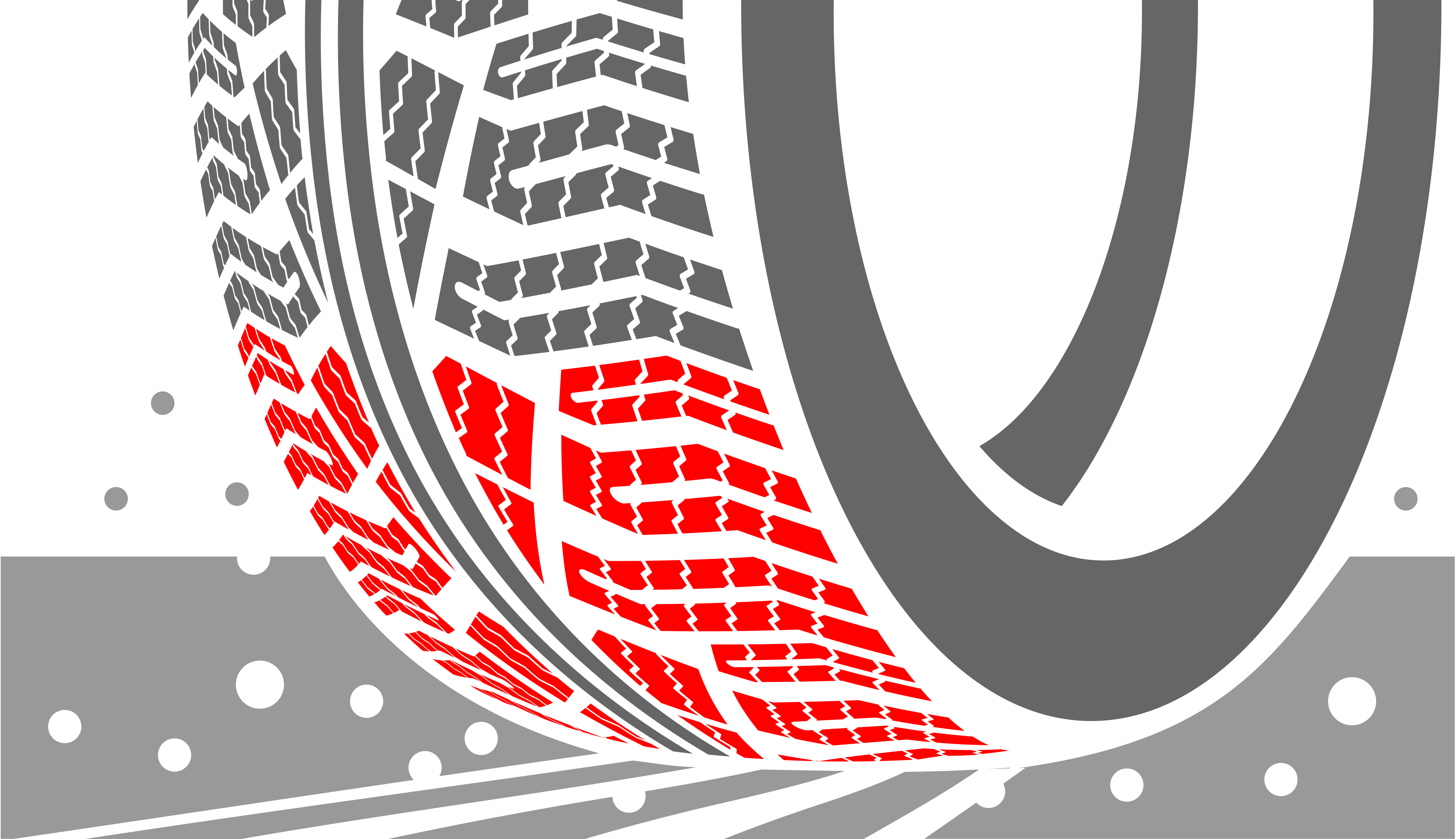
You may have heard terms like ‘symmetrical’ and ‘directional’ tread patterns. But what do they actually mean? And what exactly is ‘flow-optimised asymmetry’ as used in our RainSport 3 tyres?
Directional tread patterns: sporty and safe on snow
Directional tyres are ideal for sporty cars that drive regularly on wet roads.
These tyres usually have a chevron or arrow-shaped tread pattern which aids fast water displacement due to the unimpeded water flow. They therefore offer high protection against aquaplaning and greater directional stability. This type of tread pattern is especially suited to snow- or mud-covered road surfaces and is therefore used on our winter and all season tyres.
Directional tyres are designed to work in only one direction of rotation and must be fitted accordingly. You’ll find an arrow clearly marked on their sidewalls pointing in the direction of travel.
Symmetrical tread patterns: comfortable and cost-efficient
Unlike directional, symmetric tyres can be fitted and rotated in either direction as both halves of the tread pattern are identical. They are particularly quiet and provide good roadholding. Their lower rolling resistance reduces fuel consumption and extends the lifetime of the tyres. They are often used for commercial vehicles and provide – like our RainMax 2 - good value-for-money for those that mainly drive short distances.
Benefits of the different tread patterns
Directional tread pattern:
- High aquaplaning protection
- Excellent handling on snow
- Very good roadholding at high speed
Symmetrical tread pattern:
- Pleasant driving smoothness
- High directional stability
- Low rolling resistance
Asymmetrical tread pattern:
- Excellent handling
- High curve stability
- Good grip in wet
Flow-optimised asymmetrical tread pattern:
- Highest level protection against aquaplaning
- Outstanding grip on bends and corners
- High curve stability
- Minimum noise
Asymmetrical tread pattern: safety in all kinds of weather
The first thing you’ll notice about asymmetric tyres is that they have different tread patterns on their inner and outer shoulders. Each side serves a different purpose.
The inner sides of the tread pattern are responsible for water displacement and aquaplaning protection. The outer shoulders, with their rigid tread blocks, provide higher lateral stiffness, which give you high grip when cornering and when driving on dry surfaces. For this reason asymmetrical tyres, like our RainSport 3, are especially popular with high performance hatchbacks and sports cars.
The even stiffness of the pattern blocks ensures a quiet interior noise throughout the tyre’s entire lifetime.
With asymmetrical tyres it is essential that you ensure correct fitting. The word “Outside” has always to be faced on the outside of the car.
Flow-optimised asymmetrical tread pattern: safe protection against aquaplaning
To develop our ‘Best in Wet’ tyres, Uniroyal has designed a new generation of asymmetrical profiles which combine the advantages of directional and asymmetrical tread patterns.
Both RainSport 3 and RainExpert 3, with their flow-optimized, asymmetrical treads, offer a high level of protection against aquaplaning. Meanwhile, Shark Skin Technology (SST) reduces flow resistance and accelerates water drainage from the tyres’ contact surface.
The tyre’s solid outer shoulders, with high lateral stiffness, provide high grip and precise handling when cornering.
Related Topics
-
 2023/03/31Tread depth of winter tyresWhat do you need to look out for in the depth of winter tyre treads? Learn how winter tyres work and the importance of choosing the right tread depth for your winter tyres.Read more
2023/03/31Tread depth of winter tyresWhat do you need to look out for in the depth of winter tyre treads? Learn how winter tyres work and the importance of choosing the right tread depth for your winter tyres.Read more -
 2023/03/31Which different tread patterns are there?Find out more about the differences between asymmetrical and directional tyre tread patterns, and discover how Uniroyal has combined the best of both with the RainSport 3.Read more
2023/03/31Which different tread patterns are there?Find out more about the differences between asymmetrical and directional tyre tread patterns, and discover how Uniroyal has combined the best of both with the RainSport 3.Read more -
 2023/03/31New tyresReasons for replacing tyres: The season, or if the tyres have exceeded their wear limits. Read this when the time comes!Read more
2023/03/31New tyresReasons for replacing tyres: The season, or if the tyres have exceeded their wear limits. Read this when the time comes!Read more